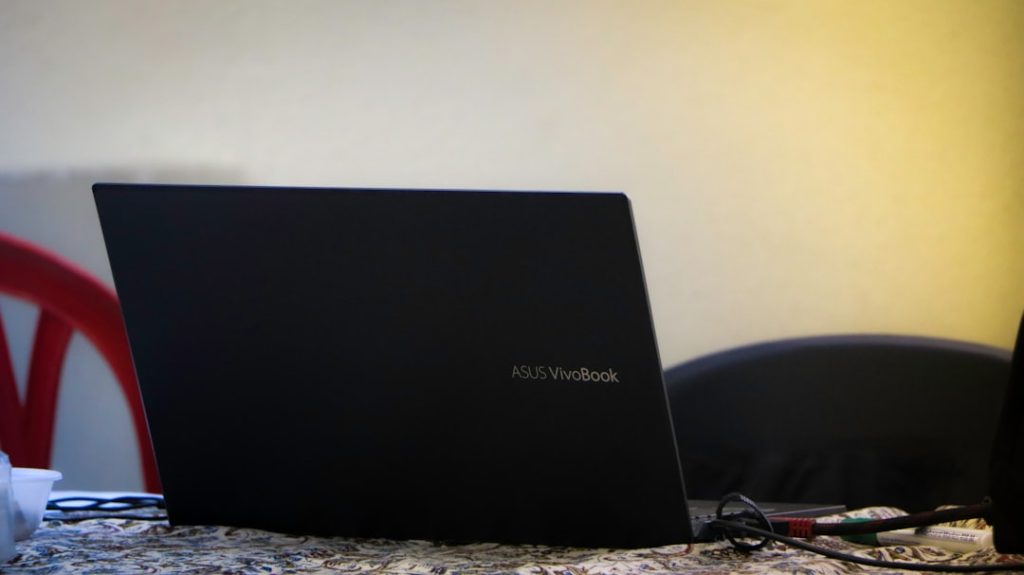Now Reading: Maximizing MacBook Battery Life: Tips for Longevity
-
01
Maximizing MacBook Battery Life: Tips for Longevity
Maximizing MacBook Battery Life: Tips for Longevity

The MacBook has become an indispensable tool for professionals, students, and casual users alike, thanks to its sleek design and powerful performance. However, one of the most critical aspects of this device is its battery life. A MacBook’s battery is not merely a power source; it is a complex system that requires careful management to ensure optimal performance and longevity.
Understanding how to maximize battery life can significantly enhance the user experience, allowing for extended periods of productivity without the constant need for recharging. Battery life is influenced by various factors, including usage patterns, software configurations, and hardware settings. As technology advances, so do the capabilities of MacBook batteries, which now offer impressive longevity compared to earlier models.
Nevertheless, users often encounter challenges that can lead to diminished battery performance over time. This article aims to provide a comprehensive guide on how to understand, manage, and optimize MacBook battery life effectively.
Key Takeaways
- Introduction to MacBook Battery Life:
- Understanding the basics of MacBook battery life and its importance for overall device performance.
- Understanding Battery Health and Longevity:
- Exploring the factors that affect battery health and longevity, such as temperature, charging cycles, and usage patterns.
- Managing Power Settings for Maximum Efficiency:
- Adjusting power settings to optimize battery usage and extend battery life.
- Utilizing Energy Saver Features:
- Making use of energy-saving features and settings to conserve battery power.
- Optimizing System Preferences for Battery Life:
- Customizing system preferences to maximize battery life and improve overall efficiency.
- Monitoring and Managing Battery Usage:
- Keeping track of battery usage and managing it effectively to prolong battery life.
- Tips for Charging and Discharging the Battery:
- Understanding best practices for charging and discharging the battery to maintain its health and longevity.
- Utilizing External Power Sources and Accessories:
- Making use of external power sources and accessories to reduce reliance on the internal battery.
- Managing Background Processes and Applications:
- Identifying and managing background processes and applications that may drain battery power unnecessarily.
- Tips for Storing and Maintaining Battery Health:
- Learning how to properly store and maintain the battery to ensure its long-term health and performance.
- Conclusion: Maximizing MacBook Battery Life for Longevity:
- Summarizing the key strategies and tips for maximizing MacBook battery life and ensuring its longevity.
Understanding Battery Health and Longevity
Battery health is a crucial metric that indicates the overall condition of a MacBook’s battery. It is measured in cycles, with one cycle representing the complete discharge and recharge of the battery. Apple recommends that users monitor their battery health regularly, as it can significantly impact performance.
A healthy battery typically retains around 80% of its original capacity after 1000 charge cycles, depending on the model. Several factors contribute to battery longevity, including temperature, charging habits, and usage patterns. Lithium-ion batteries, which power MacBooks, are sensitive to extreme temperatures.
Operating in environments that are too hot or too cold can accelerate battery degradation. Additionally, frequent full discharges can lead to a shorter lifespan. Users should aim to keep their batteries charged between 20% and 80% for optimal health.
Managing Power Settings for Maximum Efficiency

To maximize battery life, users must take control of their power settings. macOS offers various options that allow users to customize their experience based on their needs. The Energy Saver preferences pane is a valuable tool for managing power settings effectively. Users can adjust settings such as display sleep time, computer sleep time, and whether to enable Power Nap. By setting the display to sleep after a short period of inactivity, users can conserve energy significantly.
Additionally, enabling “Put hard disks to sleep when possible” can further reduce power consumption. Users should also consider disabling features like “Wake for network access,” which can drain battery life when the device is not in active use.
Utilizing Energy Saver Features
| Energy Saver Feature | Energy Saved (%) | Cost Savings () |
|---|---|---|
| LED Lighting | 50% | 1000 |
| Smart Thermostat | 20% | 500 |
| Power Management Software | 30% | 800 |
macOS includes several built-in energy saver features designed to enhance battery efficiency. One of the most effective tools is the “Battery” section found in System Preferences. Here, users can enable “Low Power Mode,” which reduces background activity and optimizes performance for longer battery life.
Another useful feature is “Automatic graphics switching,” which allows the MacBook to switch between integrated and discrete graphics based on the task at hand. This feature is particularly beneficial for users who engage in graphics-intensive activities, as it helps conserve energy when high-performance graphics are unnecessary.
Optimizing System Preferences for Battery Life
Optimizing system preferences is essential for maintaining battery health and extending usage time. Users should regularly review their settings in System Preferences to ensure they are not inadvertently draining their battery. For instance, disabling Bluetooth when not in use can save significant power, as it prevents the device from searching for nearby connections.
Moreover, adjusting display brightness is another effective way to conserve energy. The display is one of the most power-hungry components of a MacBook. Users should consider lowering brightness levels or enabling “Automatically adjust brightness” to allow the device to optimize settings based on ambient light conditions.
Monitoring and Managing Battery Usage

Monitoring battery usage is vital for understanding which applications and processes consume the most power. The Activity Monitor application provides insights into energy consumption by displaying a list of running applications and their respective energy impact. Users can identify resource-intensive applications and make informed decisions about closing or limiting their use.
Additionally, macOS includes a “Battery” menu in the menu bar that provides real-time information about battery status and usage history. This feature allows users to track their battery’s performance over time and make adjustments as needed to improve efficiency.
Tips for Charging and Discharging the Battery
Proper charging habits play a significant role in maintaining battery health. Users should avoid letting their MacBook’s battery drain completely before recharging it, as this can lead to increased wear over time. Instead, it is advisable to charge the device when it reaches around 20% capacity.
When charging, using the original charger provided by Apple is essential for optimal performance. Third-party chargers may not deliver the correct voltage or current, potentially damaging the battery in the long run. Additionally, users should avoid charging their MacBook overnight regularly; while modern batteries have built-in protections against overcharging, prolonged exposure to high temperatures during charging can still affect longevity.
Utilizing External Power Sources and Accessories
For users who frequently find themselves away from power outlets, utilizing external power sources can be a game-changer. Portable chargers or power banks designed specifically for laptops can provide additional power when needed. These devices often come equipped with multiple ports and high-capacity batteries that can recharge a MacBook multiple times before needing a recharge themselves.
Moreover, using accessories such as external monitors or USB devices can also impact battery life.
Managing Background Processes and Applications
Background processes can significantly impact battery life if left unchecked. Many applications run in the background even when not actively used, consuming valuable resources and draining power. Users should regularly check which applications are running and close those that are unnecessary.
Additionally, disabling automatic updates for applications can help conserve energy by preventing background downloads and installations from occurring without user intervention. Users should also consider limiting notifications from apps that frequently ping the device, as these alerts can wake the display and consume additional power.
Tips for Storing and Maintaining Battery Health
Proper storage practices are essential for maintaining battery health over extended periods of inactivity. If a user plans to store their MacBook for an extended duration, it is advisable to charge it to around 50% before powering it down completely. Storing a fully charged or completely drained battery can lead to irreversible damage.
Furthermore, users should periodically check on their stored devices and recharge them every few months to prevent deep discharge conditions that could harm the battery’s capacity.
Maximizing MacBook Battery Life for Longevity
In conclusion, maximizing MacBook battery life requires a multifaceted approach that encompasses understanding battery health, managing power settings, optimizing system preferences, and monitoring usage patterns. By implementing these strategies, users can significantly extend their device’s operational time while preserving its overall health. Regular maintenance practices such as mindful charging habits and proper storage techniques will further enhance longevity.
As technology continues to evolve, staying informed about best practices will empower users to make the most of their MacBook experience while ensuring that their device remains reliable for years to come. By following these guidelines and being proactive about battery management, users can enjoy uninterrupted productivity without the constant worry of running out of power at critical moments.
If you’re looking to maximize your MacBook battery life, you may want to check out this article on low-cost car insurance rates and quotes for 2025. Just like how you want to save money on car insurance, you also want to make sure your MacBook battery lasts as long as possible. By following some simple tips and tricks, you can ensure that your laptop stays charged throughout the day.
FAQs
What is the average battery life of a MacBook?
The average battery life of a MacBook varies depending on the model and usage, but it typically ranges from 8 to 12 hours.
How can I maximize the battery life of my MacBook?
To maximize the battery life of your MacBook, you can adjust the display brightness, turn off Bluetooth and Wi-Fi when not in use, close unused applications, and enable energy-saving features in the system preferences.
Does the battery life of a MacBook decrease over time?
Yes, the battery life of a MacBook will decrease over time as it undergoes regular use and charging cycles. Apple typically states that a MacBook battery retains up to 80% of its original capacity at 1000 complete charge cycles.
Can I replace the battery of my MacBook?
Yes, the battery of a MacBook can be replaced by an authorized service provider or at an Apple Store. It is recommended to have the battery replaced by a professional to ensure proper installation and safety.
What factors can affect the battery life of a MacBook?
Factors that can affect the battery life of a MacBook include the usage of power-hungry applications, display brightness, Wi-Fi and Bluetooth usage, and the age of the battery. Regular maintenance and proper usage can help optimize battery life.












